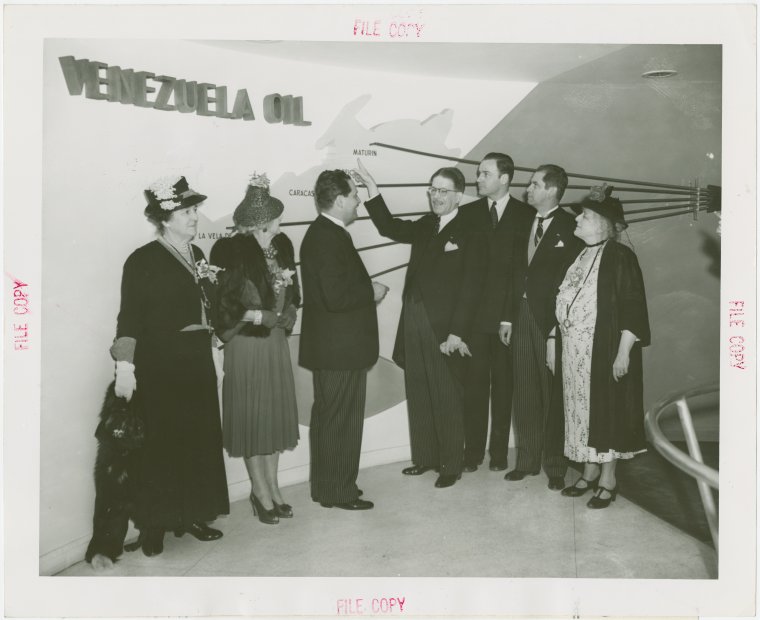
As World War II began, Venezuela was starting to become one of the world’s main exporters of oil. By 1939, Venezuela was the world’s leading exporter of oil. With large oil deposits in the country, the Venezuelan economy soared during this time period. This economic growth marked a changing tide for Venezuela because it started to become a more economically independent. Venezuela was able to gain this economic independence by relying less on foreign oil and by gradually increasing its own oil stock by obtaining new land.
While the oil market in Venezuela was becoming more successful and profitable, it was not without the help of American-owned petroleum firms. The image shows seven upper-class people standing in front of a Venezuela Oil sign and a map of the country. Their complexions and outfits suggest they are of Caucasian descent and are likely from America. This shows that, even through economic security, much of the oil profit was benefiting elites while middle-class and indigenous people are completely left out of the picture. In fact, much of the country’s success during this time period was due to American support. While Venezuela initially planned to maximize profits through selling oil to both the axis and allied powers, they eventually joined the allies. This meant that relations between Venezuela and America would ramp up during this time. Through the American lend-lease program, Venezuela partially funded America’s war efforts in exchange for security. Because of the close ties with America, the Venezuelan coast was guarded by a mix of Venezuelan and American ships. This image highlights a time in Venezuelan history when the country’s economy boomed, but was largely controlled by American elites. This only continued the divide between the upper and lower classes of the country. The wealthy became even wealthier while the poor remained poor.
Works Cited:
Manuscripts and Archives Division, The New York Public Library. “Venezuela Participation – Group at exhibit” The New York Public Library Digital Collections. 1935 – 1945.
